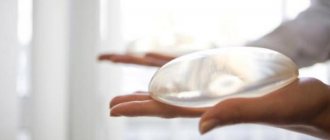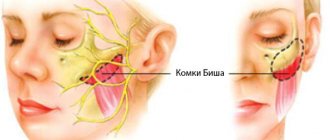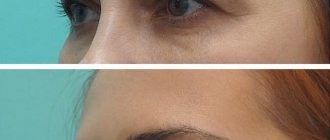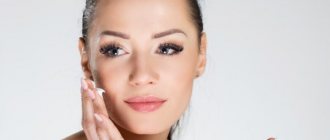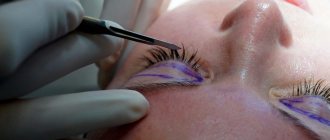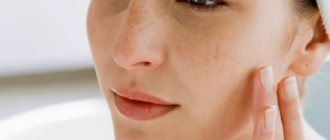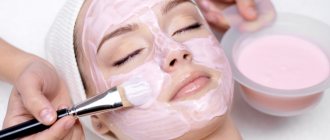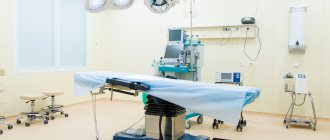Free consultation with a doctor by phone
Surgeon appointments are available daily by appointment!!!
LLC "Your Doctor"
Chat with the doctor
Addresses of medical centers in Moscow (unified reference) +7 (495) 255-45-59
Make an appointment at the clinic Discount on services Promotions
- +7 (495) 255-45-59
- Surgical centers in Moscow
- Every day from 9.00 to 20.00
- call me back
You can make an appointment with our operators by calling +7 (495) 255-45-59
Prices for services Clinic address Make an appointment Call a surgeon to your home Pediatric surgeon Ligation
A cosmetologist surgeon is involved in diagnosing the patient’s skin condition and identifying possible skin diseases. To achieve the best results, modern techniques in the field of dermatology and practical physiotherapeutic procedures are used.
In addition to getting rid of acne and pimples, when visiting a medical center, you can eliminate excess hair on various parts of the body and face. Eliminating the consequences of operations or other injuries that leave scars is not difficult with the proper approach to the treatment procedure. Some problems can be solved with medication, and in more complex situations, surgical interventions are possible to achieve the desired result.
Useful information about visiting a surgeon at the clinic:
- How to prepare for a surgeon's appointment
- What diseases does the surgeon treat?
- Calling a surgeon to your home
- Surgical care in the clinic
- Surgical care at home
- What symptoms should you contact a surgeon for?
- Treatment of surgical diseases
- Treatment of intestinal pathologies
- Treatment of skin surgical pathologies
- Treatment of bedsores and necrosis
- Treatment of parasitic diseases
- Treatment of inflammatory processes of soft tissues
- Treatment of diseases of the musculoskeletal system
- Diagnosis of surgical diseases
Yulia Chebotareva
Yulia Chebotareva is the chief physician and owner of the Estelab . They love it because it works equally well with both the needle and the attachments of the devices. In Yulia’s office you definitely don’t have to be afraid of getting something extra: it’s hard to guess from Chebotareva’s clients that they often visit the cosmetologist. Her strong point is natural effect.
Instagram content
This content can also be viewed on the site it originates from.
Medical cosmetology procedures
Aesthetics is an all-encompassing term for specialties that focus on improving people's appearance through cosmetic procedures. It's not just scars, wrinkles, moles, excess fat, unwanted hair and skin discoloration.
Aesthetic and cosmetic procedures have traditionally included reconstructive surgery, cosmetic surgery, dermatology: liposuction, facelift, breast implants, radiofrequency ablation and non-surgical procedures: radiofrequency skin tightening, non-surgical liposuction, chemical peels. And all medical procedures that are aimed at improving the physical appearance and satisfaction of the patient. Applications of non-invasive to minimally invasive cosmetic procedures include hair transplantation, chemical peels, microdermabrasion and more.
What makes medical aesthetics unique is that it is performed on patients in a clinical setting and by medical professionals who may recommend non-invasive skin care procedures for medical purposes or for purely cosmetic reasons.
Whether working to promote the healing of damaged skin or simply helping a patient gain a new level of self-confidence after an injury or procedure that has changed their appearance, estheticians make a positive difference in the lives of the patients they work with.
Licensed Cosmetologist
A licensed medical cosmetologist is a dermatologist with an appropriate higher education. A senior professional who specializes in skin care, especially non-invasive cosmetic procedures. Cosmetic estheticians are often confused with cosmetologists, but these are two different fields.
An esthetician usually focuses on the application of conventional cosmetics and does not have a medical degree.
Cosmetic physicians can apply cosmetics and perform cosmetic procedures, and their experience includes a much broader range of skin care and treatment expertise.
Cosmetology clinic
A cosmetology clinic is a medical institution that provides services to the population in the fields of cosmetology and trichology. The room in which consultations and procedures are carried out meets all sanitary standards established by the state. Specialists have the appropriate level of education for the position they occupy and perform procedures that correspond to their qualifications.
Cosmetologist (higher medical education) - consultations, drawing up a correction plan, complex hardware procedures, injections and thread lifting. A cosmetologist with secondary medical education - massage, cleansing, peeling, simple hardware techniques, mesotherapy as prescribed by a doctor.
The clinic must have a cosmetology license; it can be seen in the reception area and often on the clinic’s official website. It is important to know that by receiving medical services in a licensed institution from a qualified doctor, you are much more likely to avoid problems after procedures in the form of complications, incorrectly administered drugs, drugs of unknown origin, or simply counterfeit products. Even a consultation with a cosmetologist with a low level of knowledge can end up costing a lot, so before you save money, think about whether it’s worth it.
Training:
To qualify, a cosmetologist needs several hundred hours of mandatory training. Once a cosmetologist has achieved the necessary level of advancement, he or she is required to undergo an in-depth examination before being licensed to use drugs or complex medical procedures. Many cosmetologists receive additional education, attend seminars, advanced training courses, and learn the latest procedures and technologies.
The wider the knowledge of a cosmetologist, the more practice he has, the greater the range of cosmetology services he provides.
Responsibilities of a cosmetologist:
- Educating the patient on proper skin care techniques, sun protection, home care, and others
- Consulting the patient before the upcoming procedure
- Advising the patient on pre-procedure skin care
- Obtaining a new patient's skin care history, including a list of all products and medications used, as well as past services and procedures
- Monitoring the patient during treatment and rehabilitation
- Answer all patient questions about skin care problems that have arisen
- Providing detailed instructions to patients for home care
- Providing additional advice on skin care during the post-rehabilitation period
Injection cosmetology
Injection cosmetology is the best alternative to plastic surgery, which for many years was the only way to correct signs of aging and skin defects.
Injection cosmetology is youth and beauty using minimally invasive and safe methods, with quick obvious results! And thanks to all these advantages, injection cosmetology attracts so many followers and admirers!
Effective and virtually painless elimination of wrinkles: from moderate to severe, on the face and neck, correction of the boundaries and volume of the lips, moisturizing and nourishing your skin using mesotherapy methods. Inflammation of the skin can be under the skin or on the surface of the skin and such irritations, purulent inflammations and consequences on the skin after scars, wounds, after acne in the professional activities of a cosmetologist.
Using only safe, effective and time-tested materials and methods:
Botox, Dysport. Botulinum toxin type A injection works by blocking the nerves that contract muscles, softening the appearance of dynamic wrinkles such as wrinkle lines, forehead lines and crow's feet, and rejuvenating the aging face.
Hyaluronic acid injections are used to rejuvenate the skin, fill wrinkles, and correct contours and shape of the face. It is possible to use them for the cheeks and eye area.
Hyaluronic acid can be injected into the lips. Using this method, injections of hyaluronic acid can correct wrinkles, smooth out skin defects, and change facial contours. Lip beauty allows you to change the contour and shape of your lips and enlarge your lips to your desired size.
Mesothreads are a non-surgical alternative for face and body lifting.
The only non-surgical face and body lift. Recognized as the most effective, fastest and non-traumatic procedure
Mesothreads are pulled into the selected area of the skin with special ultra-thin needles. The thread is made of biodegradable material - polydioxanone, which is wrapped in polyglycolic acid. Thanks to this special structure, the threads are very elastic. The threads completely decompose within 6-8 months, but the lifting effect lasts for more than a year, thanks to the new collagen structure formed in the first 2 weeks, which performs a supporting function and provides a long-lasting lifting effect.
MESONTHREAD PROCEDURE PROCESS:
We discuss the desired effect and draw a diagram for installing mesothreads. Usually the threads are inserted from the bottom up, to the hairline. We disinfect the area we want to treat and apply an anesthetic cream. Install themes in the selected area. The procedure lasts from 45 minutes to 1 hour, depending on the number of threads we install.
HANDS AND SKIN OF HANDS:
The hands are usually the first place where we start to see signs of aging and this will immediately indicate your age.
Over time, we lose tissue volume in our hands, veins become more prominent, visible tendons appear, and bones protrude. Even if you have a great skin care regimen, it is almost impossible to stop the signs of aging on your hands.
HAND REJUVENATION:
You've probably heard of injecting filler into facial tissue to restore or add volume to problem areas (usually the cheeks, lips and under the eyes). Approximately the same procedures are used to rejuvenate hands!
Injecting filler into the arm area helps restore volume, eliminate wrinkles and reduce the appearance of veins and skin discoloration.
Medical cosmetic procedures and your natural beauty
Throughout history, people have struggled to improve their appearance in ways that appear natural. Today's cosmetic procedures will give your natural beauty such success that you will give up conventional cosmetics.
Cosmetics have been around for at least two million years, and the use of face and body paints dates back to the Paleolithic era. People readily used blushes and powders during the Shang and Zhou dynasties, around 1600–1050. BC. It became popular to use cosmetics in China and over time, cosmetology and traditional Chinese medicine began to merge together. Healers began to understand the mental health benefits of looking good.
In modern life, it is not enough to apply makeup - cosmetics should enhance the natural beauty of the wearer. Until recently, people were reluctant to change their appearance in “any way” that created an unnatural appearance. Although hair dyes have been around for centuries, only models, actresses and "women of reduced social responsibility" dyed their hair until the 1950s and 60s of the 20th century.
Medical cosmetology can actually enhance your natural beauty by simply enhancing what nature has already given you. For example, smooth, flawless skin doesn't need as much makeup to look healthy, and long-term hair removal reduces the need to shave or use harmful chemicals on your skin
Skin care treatments greatly enhance the nature of the skin, leaving your skin so smooth and attractive that you won't need makeup! Chemical peels, resurfacing and skin tightening remove old, tired skin cells and promote the development of fresh, new skin.
Botox will enhance your natural beauty by stopping the natural aging process, so you don't have to hide your wrinkles with makeup or creams to maintain your youth.
Today's cosmetic procedures can enhance your natural beauty so much that people will ask when looking at you: Is she really all natural? But only your cosmetologist will know about this!
ACNE TREATMENT:
Acne is a common, ever-irritating skin problem that causes clogged pores and inflamed oil glands. Acne is most common among young people during puberty, but there are forms that occur later in life. There are different forms of acne. Acne can be caused by genetic factors, hormonal factors, psychological stress, environmental factors, cosmetics, or pressure on the skin. Sometimes the visible cause can be eliminated, but often this is not enough if hidden factors exist.
Large article about acne PHOTO GALLERY of the results of the “BEFORE and AFTER” procedures
Ainutdin Gamidov
Ainutdin from Dr. Hamidov’s plastic surgery and cosmetology clinic has a high price tag, so people rarely go to him for regular botulinum toxin injections into the forehead (almost every cosmetologist can handle this). People sign up for super jewelry work with him. Ainutdin, using a needle and sometimes a device attachment, changes the shape of the nose - makes the tip more upturned, straightens the hump, changes the shape of the face and performs other complex cosmetic manipulations.
Instagram content
This content can also be viewed on the site it originates from.
Recommendations of a cosmetic surgeon
To avoid possible skin diseases, you should carefully monitor your health and lifestyle. There are a number of recommendations, if followed, a visit to the doctor will not be required:
- timely nutrition should be balanced and consist of healthy foods;
- do not overstrain the body with excessive physical activity;
- walks in the fresh air should be daily, especially when working in an office or other premises;
- do not overcool the skin and avoid prolonged direct exposure to sunlight;
- use cosmetic products suitable for a specific skin type.
If characteristic symptoms of the disease develop, you should not hesitate to visit a medical center. Timely treatment will help to avoid complications and get rid of skin problems in a short period of time, thanks to an effective course of treatment.
Diagnostic methods in surgery:
- Doppler in surgery
- Colonoscopy
- Angiography
- CT scan
- Gastroscopy
- MRI
- Abdominal ultrasound
- X-ray
- Endoscopy
Prices:
| Code | Name of service | Prices |
| 1 | Initial appointment | 1200 |
| 2 | Repeated appointment | 900 |
| 3 | Calling a surgeon to your home | 3500 |
| 4 | Abdominal ultrasound | 2200 |
| 5 | Ultrasound of veins and vessels | 2400 |
| 6 | Doppler 2-3 trimester | 1200 |
| 7 | Rectoscopy | 1500 |
Elena Belyakova
Elena Belyakova, a cosmetologist at , has a comprehensive approach to rejuvenation. She will check whether early ptosis is a consequence of hormonal imbalance, whether the appearance of age spots is associated with low iron levels, and wrinkles around the eyes are associated with vitamin A deficiency. Having already prescribed (if necessary) HRT and a course of dietary supplements, she will take a syringe and device nozzle.
Instagram content
This content can also be viewed on the site it originates from.
When to see a doctor
In addition to cosmetic procedures related to the removal of unsightly age spots and puffiness under the eyes, a cosmetic surgeon deals with the treatment and removal of pathologies that have formed on the skin. Some of these diseases can not only ruin your appearance, but also cause irreparable damage to your health.
If certain symptoms appear, you should not delay your visit to the doctor:
- disruption of the sebaceous glands, resulting in dry epidermis and acne;
- painful itching and peeling of the skin;
- regular inflammatory processes appearing on different parts of the body and face;
- increase in warts;
- unusual rashes of various types;
- copious amounts of pimples;
- the appearance of purulent formations.
Such signs may indicate the possible development of some pathology in the body. Self-medication in such cases is excluded and can lead to serious complications. Ordinary acne, as it may seem at first glance, may well indicate problems with the functioning of the kidneys or other internal organs.
Much worse is the formation of boils or purulent compactions. In such situations, you should not hesitate to visit a doctor, because in some cases surgical intervention will be required to remove the formations, followed by a course of treatment and regular care of the damaged skin areas.
What symptoms do you see a surgeon for:
- Presence of hernial protrusion
- Daggering pains in the abdomen
- Bloating
- Pain in the right hypochondrium
- Bitterness in the mouth
- Nausea
- Presence of neoplasms on the skin
- Swelling and redness of the skin
- Bone fractures and bruises
- Wounds of any location
- Vomit
- Enlarged and painful lymph nodes
Victoria Filimonova
to cosmetologist Victoria Filimonova - registration on the Dr.Viki website is constantly suspended. Among her clients, as well as among those on the waiting list, are entirely Tatler magazine heroines. The demand is so high that Filimonova practically does not take on new clients. Her strengths are the ideal skin texture after procedures and recommendations for home care.
Instagram content
This content can also be viewed on the site it originates from.
Addiction to drugs
The question is simply included in the top 1. Although okay, in the top 2, there is also something about “won’t it get even worse later if you don’t repeat it?” In principle, they can even be considered one question.
Botulinum toxin - in theory, it may stop working after some time. It is believed that the production of antibodies to the drug will reduce its effect to zero, that is, when it is introduced into the body, neutralization immediately occurs. In my practice, there were and are patients who have been receiving Botox for 15 years, and no antibodies are produced. Moreover, even an increase in dosage is not required. There was one case of complete absence of effect, just one, so it’s probably not worth drawing conclusions about addiction about the reasons.
Effective procedures for facial rejuvenation
In the process of development of cosmetology, both methods and compositions, as well as the approach itself, changed. Today, anti-aging procedures are aimed not only at achieving external results, but also at stimulating and correcting internal processes. This means that they stop already running aging mechanisms and prevent the activation of new ones. The cosmetologist’s task is to create for you a set of procedures that would help put your appearance in order without surgical intervention or with a minimum of it.
There are four categories of anti-aging activities
- Injectable
- Operative (aesthetic cosmetology)
- Hardware
- Non-traditional
Massage and gymnastics can be placed in a separate category. These are the least aggressive approaches with fairly high efficiency, which, precisely because of the minimal shocks to the body, are perceived as something lightweight and ineffective.
Let's look at the most common procedures for facial skin rejuvenation.
Face massage
Massage has the longest history among all currently known cosmetic procedures. Despite this, it still remains one of the most effective methods of combating the signs of age.
The secret of success is that the massage therapist’s consistent movements tone the muscular frame of the face. The muscles, in turn, tighten the skin. In addition, massage improves blood circulation and the functioning of the lymphatic system, which helps reduce puffiness and eliminates dark circles under the eyes. Not to mention the relaxing properties of the procedure.
A worthy alternative to traditional facial massage is cupping massage. In many ways it is even more effective. Especially if you need to achieve immediate results. What benefits does manual self-massage have:
- The jars create a vacuum that enhances the action of your hands
- Self-massage requires knowledge of techniques and experience, which is gained through trial and error (and we conduct experiments on our own face, do not forget about this). Cupping massage is learned faster and mastered much easier
Long-term results can be obtained after 3-4 sessions: wrinkles will be smoothed out, skin tone will increase. If you perform a dozen procedures, you will notice how sagging areas are tightened and the facial contour becomes clearer.
Contraindications
The procedure is universal, suitable for any age, but there are still contraindications:
- Wounds and inflammation on the face
- Cuperosis
- Oncology
- Diseases of the circulatory and lymphatic system
- Allergies in full swing
In addition, taking into account individual characteristics, you need to:
- Choose oil according to skin type
- Avoid raised moles at a distance of 1 cm
- Use light pressure on thin and sensitive skin
Attention! During your period, bruises may occur.
For cupping massage there is a scheme that must be followed to avoid stretching the skin.
Selection of cups for massage
Massage cups are chosen based on the task, skin type, and budget. I chose glass ones with a rubber nozzle. They are effective, comfortable, durable. Besides them, there are:
- Silicone. Comfortable and inexpensive, but keep their shape for no more than 2-3 sessions
- Rubber. A budget-friendly and easy-to-use option. But rubber picks up odors and gets dirty quickly
- Plastic with pneumatics. Minimizes your effort during work
- With magnet. If you need to combine the action of vacuum and magnetic therapy
- With valve. Good for sensitive skin and the eye area as it allows you to regulate pressure
What to do?
- Do not frequent - at least 4 months between procedures.
- Do not finish pinning later than 2-3 weeks after the first correction (since the correction must be on time)
- Wait until facial expressions are completely restored in all zones until a trace of correction is made. Pinning your forehead a little because it started to move is not an option!
Fillers - they are never needed again when correcting the same area. On the contrary, less is more. There is no habituation. The effect is over, we are back where we started. But the fact that they have already forgotten how it was is another question. A “before” photo is always helpful))
Thread lifting is similar. There is a thread - there is an effect. Over time, they are no longer required; the amount of correction is adjusted to the condition of the face and neck. You've been waiting a long time, then, as they say, don't blame me
Methods of working with skin quality - meso, bio, apparatus, peelings. Yes, they are required more and more often with age, this is a fact. But not because the skin “gets used” to the drugs and stops working, but because in the period from 25 to 100 years old, it unfortunately does not get any younger. In addition, we do not drink from mountain streams around the clock, do not eat organic borscht, do not breathe the air of the Elbrus region, and do not live in forgiveness and stress and disregard. I’m not talking about the sun and gadgets, right?)
There is only one secret - in order for it to be beautiful and not very often, you need to start on time, that’s all!
Procedures for facial rejuvenation: when, who needs it, why?
Timeliness is one of the main conditions in the fight for rejuvenation. You can start taking care of your face from a very young age. And you need to start anti-aging measures when age-related changes become noticeable. And this is 30–35 years.
Indications for procedures
Physiological aging begins almost from puberty. Since this time, the human body loses 1% of collagen annually. But the process occurs slowly and unnoticed until we approach middle age.
Starting at age 30, the body slows down the production of collagen and hyaluronic acid, which are responsible for moisturizing the skin. Regeneration also occurs more slowly, making the supply of oxygen to the dermis more difficult. Lack of elastin leads to weakening and sagging skin.
The main indicators for starting anti-aging measures are:
- Loss of skin elasticity
- Pale, sallow or yellowish complexion
- Pigment spots, spider veins
- First wrinkles
- Increased skin sensitivity to external influences
- Swelling and puffiness of the face, loss of clear contours
- Downward displacement of the corners of the lips and eyes
Of course, all these signs do not appear at once. At first you don’t even notice the changes, then you feel almost imperceptible changes, and one fine day you ask yourself the question: who is this woman looking at you from the mirror?
An anti-aging complex can become an indispensable assistant if you are not satisfied with the current state of affairs. He can postpone impending changes in time and correct those that have already occurred
Contraindications to procedures
If the decision has already been made, you need to choose the right approach. The beauty industry is developing rapidly, surprising us with new methods and means almost every day. But they are far from universal, and what would be a real gift for a neighbor may cause a completely different reaction in you.
Therefore, it is better not to use idle advice, but to contact a cosmetologist who will help you choose options taking into account the individual characteristics of your skin and type of aging. Both indications and contraindications are different for everyone. But there are also a number of universal ones. This:
- Pregnancy and lactation
- Oncological diseases at the acute stage
- Blood coagulation (clotting) disorder
- Hypertension
- Sugar
- Epilepsy
- Inflammation, viral and infectious diseases
- Dermatological diseases
- Tendency to allergies
For psychological illnesses, after physical exertion, as well as for people over 75 years of age, many specialists may also refuse to perform beauty procedures.
Cosmetologist and plastic surgeon: friendship without clear boundaries
Today, a cosmetologist and a surgeon work very closely together. And the point here is not at all the age of the patients: genetically, each person ages in his own way. To be convinced of this, just look at your relatives - and you will be able to imagine the whole process.
| LEBEDIUK Victoria Georgievna Candidate of Medical Sciences, cosmetologist In fact, the alliance between a cosmetologist and a surgeon cannot be precisely separated in time. The situation in each specific case develops differently: for example, someone may need blepharoplasty even at 30 years old. |
People in Russia, as a rule, are of Asian or European origin, so in their fourth decade they face different problems
: for example, it is not so much sagging tissue that may come to the fore, but excess skin on the eyelid, or, conversely, a lack of volume under the eyes.
In this case, the role of the “first violin” will be played by a cosmetologist, because filling the voids under the eyes and fighting folds and fine wrinkles is still his prerogative.
He is the one who knows which drugs are combined with each other when working with each zone - for example, botulinum toxin and fillers. This is work that is carried out once, and then only maintained as the effect of the drug wears off.
If we are talking about changing the oval of the face
, then, most likely, it will manifest itself by the age of 40-45 - it is at this age that ladies begin to worry about this. Therefore, if you look in the mirror and understand that you need to do something with your face, you are not mistaken.
But who should I go to: a surgeon or a cosmetologist? You should always start with a cosmetologist. And he, in turn, will determine which of the five main genetic types you belong to: the correction program will be built on this.
